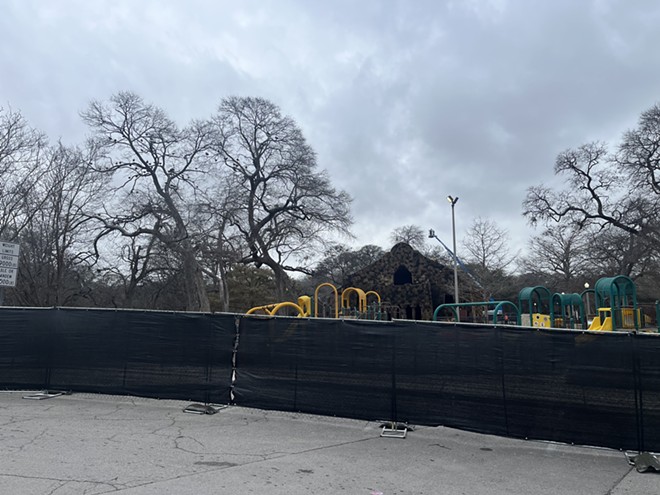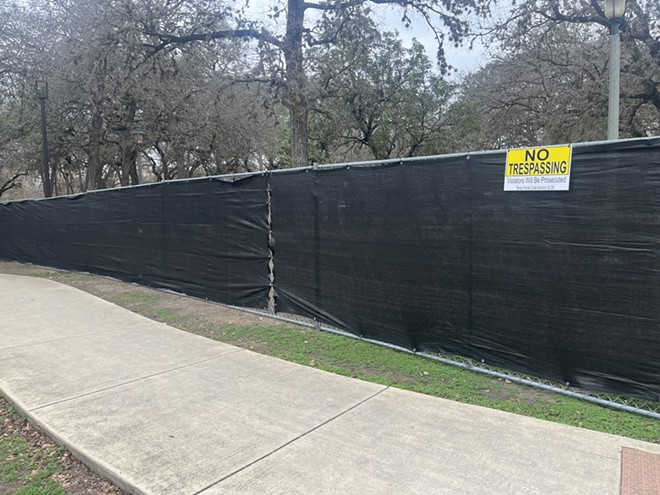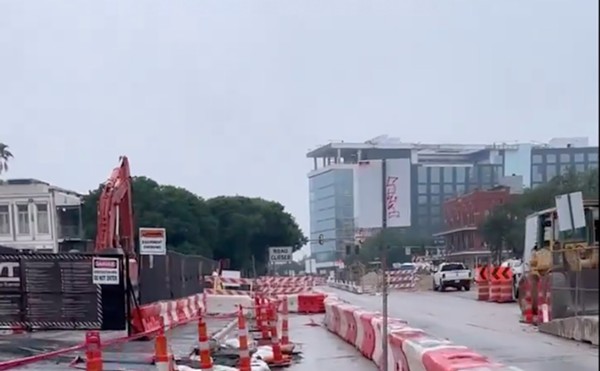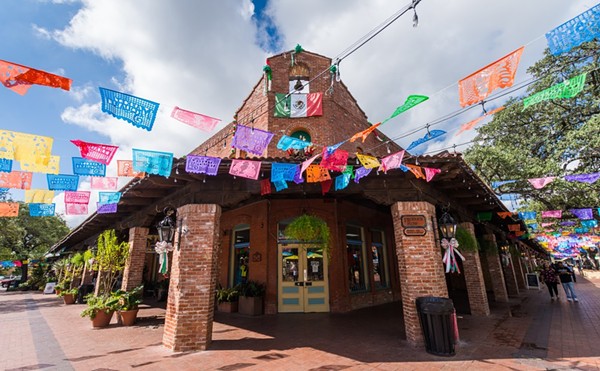Earlier this week, the City of San Antonio closed off large swaths of the park behind chain link fences and began using "nonlethal" measures to force the relocation of migratory birds. The project, which has drawn outrage from local environmentalists, is expected to continue into March.
City officials said they're trying to protect the park's playground and Joske Pavilion from being covered with bird feces, which can be harmful to human health. Such relocation efforts are commonly used by other municipalities, they added.
Still, environmental advocates aren't happy. They consider the city's actions an affront to the park's natural space, adding that many of the migratory birds now flocking there are doing so because of development and other human activity.
“They were shooting shotguns last year, using lasers and drones," avian advocate Alesia Garlock said of the city's ongoing relocation efforts. "The assault is not only on wildlife but on the public, who value the park for a tranquil place to enjoy nature.”
In an emailed statement, city officials said they're coordinating the project with the U.S. Department of Agriculture, the Texas Parks and Wildlife Department and the U.S. Fish and Wildlife Service.

Grant Ellis, natural resources manager for San Antonio Parks and Recreation, said the efforts aren't an attempt to move the birds completely out of Brackenridge Park, just to a less-disruptive location inside the public space.
However, those kind of relocation efforts can't control where birds go, Texas State University Biology Professor Clay Green told the Current. If run out of one place in Brackenridge, there's no guarantee the animals will simply move to another less bothersome spot inside the park.
When the birds choose to move, their new location must fit similar conditions to the one they're vacating, said Green, an expert in migratory birds. That means they'll look for spots that have ample access to foraging opportunities, nesting, safety and a constant water source.

"The city's destruction of habitats at Elmendorf and Woodlawn has caused disruption to the ecosystems, Garlock said. "Thus the birds moved as they were forced to."
Environmentalists said they're troubled by the city's lack of transparency about its plans for the birds, saying officials should have collected more public comment before starting the project.
Those arguments echo concerns wildlife advocates and neighborhood groups raised last year about the city's handling of a plan to fell 104 trees, including 10 heritage specimens, at the park. Prompted by public outrage, the city pushed back the culling to allow more citizen input.
Ellis said the city held a series of public meetings last year to answer questions about its bird mitigation efforts.
But Garlock counters that those weren't sufficient. She argues that the city has actively avoided public comment about its ongoing efforts to relocate birds from public spaces.
Follow us: Google News | NewsBreak | Instagram | Facebook | Twitter



















